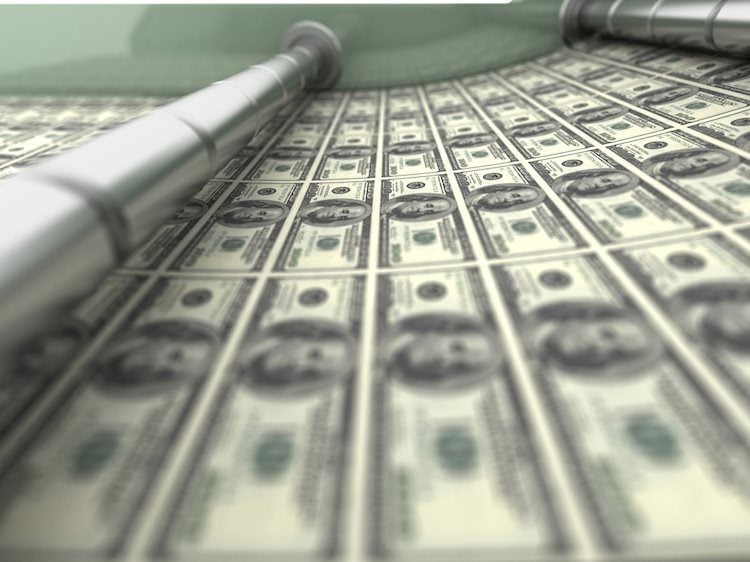- The US Dollar rallies on all fronts, with antipodes as outliers.
- Markets are trembling with fear after the EU election result forced Macron to call for snap elections.
- The US Dollar Index pops above 105.00 and hits a fresh four-week high.
The US Dollar (USD) edges higher and extends its rally on Monday following upbeat May Nonfarm Payrolls data on Friday. The main driver for the second leg higher comes from European elections over the weekend, where the Far Right parties gain ground in the European Union (EU). The results in France were even so devastating for French President Emmanuel Macron and his ruling coalition that he called snap elections for June 30 and the run-off on July 7.
On the economic front, it is a very calm start to the week. On Wednesday, the focus will be on the US Consumer Price Index (CPI) release for May and on the US Federal Open Market Committee (FOMC), which will decide on the Federal Reserve’s (Fed) monetary policy interest rate and will release a fresh dot plot and economic projections.
Daily digest market movers: EU elections no impact for US
- On Sunday, the European election results were released with some key takeaways:
- French President Emmanuel Macron saw his party coming in third, way behind the two parties that won the most votes. This forced President Macron to call for snap elections.
- In Italy, the Far Right’s current leading Prime Minister Giorgia Meloni’s party won another substantial amount of votes and further cemented the Far Right gains for her government in Italy.
- The US Treasury will have its work on Monday with three bond allocations:
- At 15:30 GMT, a 3-month and a 6-month bill will be released.
- At 17:00 GMT, a 3-year bond will be auctioned.
- Equities are in the red across the board, especially in Europe. The Euro Stoxx 50, the European equity benchmark, is falling over 1%. US equity futures are just slightly in the red.
- There has been a sharp shift in the Fed rate cut expectations for September. The CME FedWatch tool shows that 30-Day Fed Funds futures pricing data suggest a 49% chance that interest rate will be lower than the current level in September, significantly down from the 59.6% recorded a week ago.
- The benchmark 10-year US Treasury Note prints a fresh seven-day high at 4.46%.
US Dollar Index Technical Analysis: Will the Fed tell us what we already know?
The US Dollar Index (DXY) has snapped some crucial technical levels in its run higher over the past two days. Trading even above the 55-day Simple Moving Average (SMA) at 105.04 on Monday, it will be key to see if this level can hold as support by Wednesday when a rather hawkish Fed might lay out the plan for the DXY to jump back to 106.00. That would mean even a possibility for a fresh 2024 high, depending on the message US Fed Chairman Jerome Powell delivers to markets.
On the upside, there are some technical or pivotal levels to watch out for. The first is 105.52, a pivotal level that held support during most of April. Next comes at 105.88, which triggered a rejection at the start of May and will likely play its role as resistance again. The biggest challenge remains at 105.51, the year-to-date high marked on April 16.
On the downside, a trifecta of SMA’s is now playing as support. First, and very close, is the 55-day SMA at 105.04. A touch lower, near 104.45, both the 100-day and the 200-day SMA are forming a double layer of protection to support any declines in the US Dollar Index. Should this area be broken down, look for 104.00 to salvage the situation.
Risk sentiment FAQs
In the world of financial jargon the two widely used terms “risk-on” and “risk off” refer to the level of risk that investors are willing to stomach during the period referenced. In a “risk-on” market, investors are optimistic about the future and more willing to buy risky assets. In a “risk-off” market investors start to ‘play it safe’ because they are worried about the future, and therefore buy less risky assets that are more certain of bringing a return, even if it is relatively modest.
Typically, during periods of “risk-on”, stock markets will rise, most commodities – except Gold – will also gain in value, since they benefit from a positive growth outlook. The currencies of nations that are heavy commodity exporters strengthen because of increased demand, and Cryptocurrencies rise. In a “risk-off” market, Bonds go up – especially major government Bonds – Gold shines, and safe-haven currencies such as the Japanese Yen, Swiss Franc and US Dollar all benefit.
The Australian Dollar (AUD), the Canadian Dollar (CAD), the New Zealand Dollar (NZD) and minor FX like the Ruble (RUB) and the South African Rand (ZAR), all tend to rise in markets that are “risk-on”. This is because the economies of these currencies are heavily reliant on commodity exports for growth, and commodities tend to rise in price during risk-on periods. This is because investors foresee greater demand for raw materials in the future due to heightened economic activity.
The major currencies that tend to rise during periods of “risk-off” are the US Dollar (USD), the Japanese Yen (JPY) and the Swiss Franc (CHF). The US Dollar, because it is the world’s reserve currency, and because in times of crisis investors buy US government debt, which is seen as safe because the largest economy in the world is unlikely to default. The Yen, from increased demand for Japanese government bonds, because a high proportion are held by domestic investors who are unlikely to dump them – even in a crisis. The Swiss Franc, because strict Swiss banking laws offer investors enhanced capital protection.
